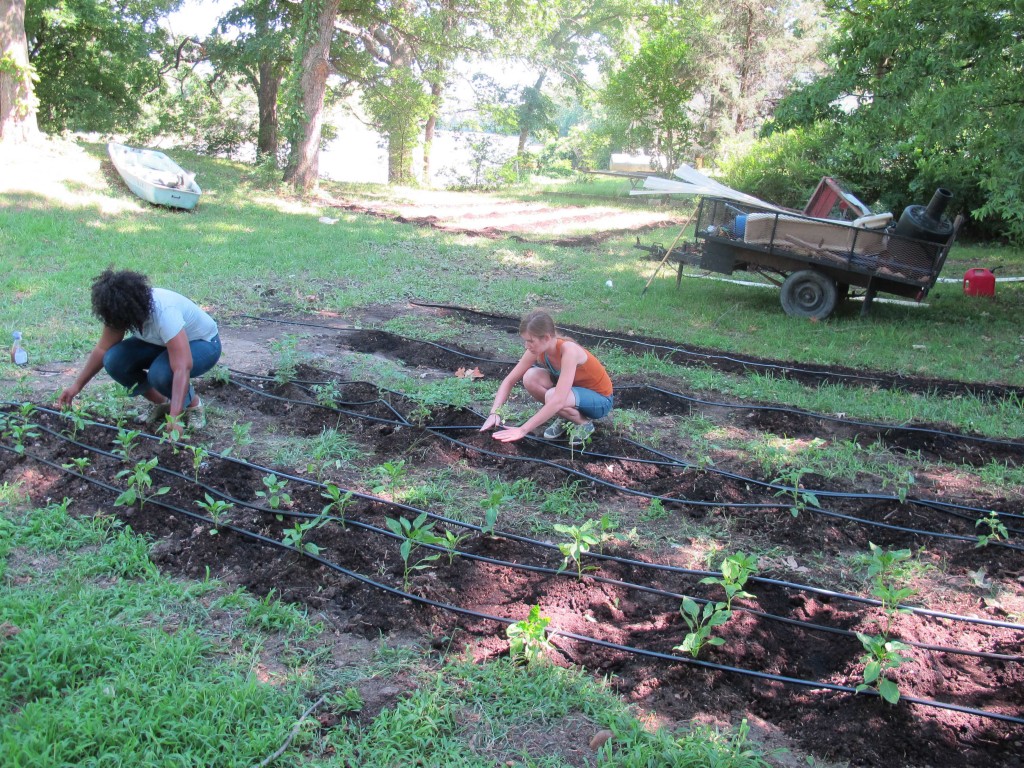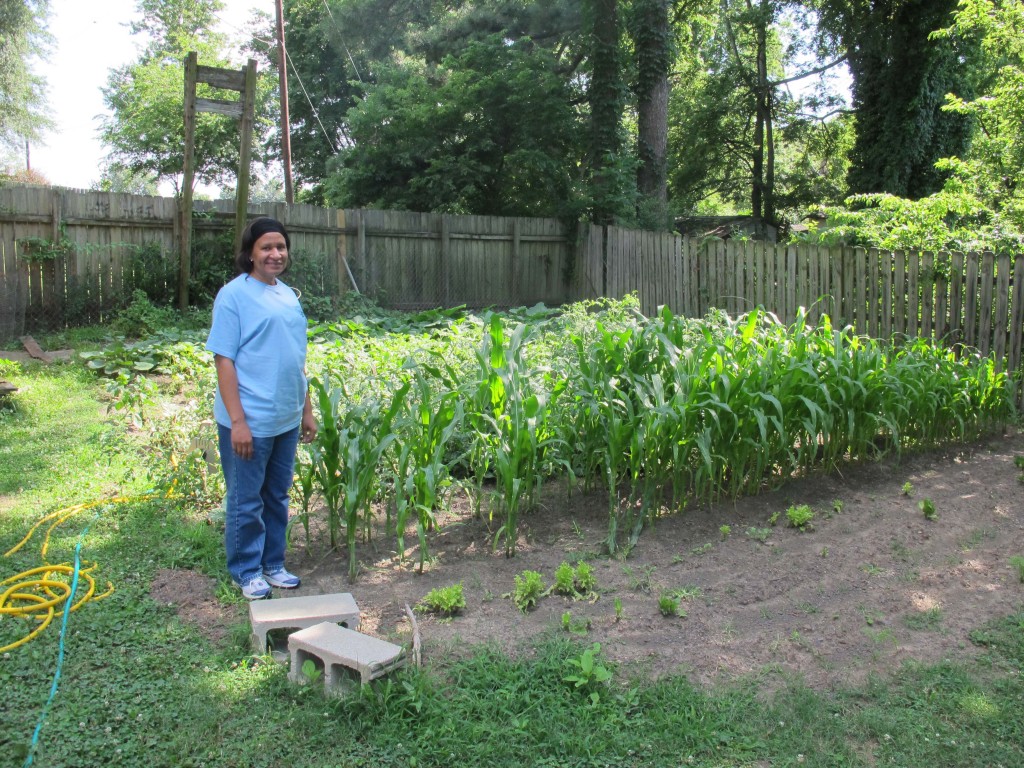Editor's note: The following is a guest post from an outgoing Heifer International intern, Lesley Waterson. If you are interested in becoming an intern with Heifer International, please contact interns@heifer.org.
Friday was the conclusion of my internship with Heifer International. Since April 2012, I have been working closely with Heifer’s USA Country Program. I received assignments on a wide range of topics, which included internal management of Heifer USA’s documentation, investigation of state legislation to support local food, and research on direct sales avenues for local farmers. Seeing the domestic program evolve throughout the course of my time at Heifer has provided valuable perspective, and I am truly grateful to have worked with a team of passionate and creative individuals.
 Lesley, right, and Heifer International staff member Senchel Matthews on a site visit in Hughes, Arkansas. Photo courtesy of Heifer International.
Lesley, right, and Heifer International staff member Senchel Matthews on a site visit in Hughes, Arkansas. Photo courtesy of Heifer International.
The shift in direction that the program is taking will no doubt offer Heifer a plethora of new opportunities. With a strong entrepreneurial spirit, it will eventually lead to building relationships with food sector businesses and has the potential to play a larger role in how Americans get their food. But where does this process begin?
Poco a poco se anda lejos. English translation: “Little by little, one goes far.”
This is one of my favorite Spanish proverbs. To me, it means that success comes slowly and with deliberate steps. If we want to build a successful social enterprise for Heifer’s domestic farmers, we need to start small, create a strong cooperative model, and move toward expanding the market from there. One of the ways to start small is to establish a handful of direct markets. Direct markets (i.e. farmers’ markets, community supported agriculture [CSAs], online local buying programs) offer small- and mid-scale farmers a consistent and viable income. Products sold directly to consumers give farmers a higher profit margin than if they were to sell to a retail or wholesale supplier. (See http://newfarm.rodaleinstitute.org/depts/midatlantic/FactSheets/direct_mrkt.shtml for more information). Direct markets also side-step tedious bureaucratic processes and establish more wholesome relationships with the farmers’ clientele. Hopefully these relationships will help farmers to feel a strong sense of pride in both their products and what they are doing for the community at large.
In the research I completed on direct sales avenues, it seems that there is a growing trend of incorporating workplaces as a place for farmers to connect with new potential consumers. What’s more, workplaces offer a beautiful chance to incorporate health insurance benefits to employees. Many companies with workplace CSAs or food share programs have provided payroll deduction options and even discounts on health insurance premiums for employees who participate. These options make participating in direct local food programs all the more attractive.
Here are the perks in a nutshell:
Because these workplace CSAs and food share programs are still gaining ground, the hardest players to convince about the employee health benefits are the health insurance companies. But even this obstacle is slowly being overcome. Today there are a few examples in which health insurance companies are following suit in promoting local food. For instance, Fairshare CSA Coalition—based out of Madison County, Wisconsin—has created a rebate program ($100 for individuals and $200 for families) to support employees who want to buy local food. The rebate program is managed by four insurance companies—not the businesses where employees work. Since the program’s inception in 2005, rebates were claimed for 75% of all coalition CSA shares…a whopping 28,000 rebates in total. Check out http://www.csacoalition.org/ for more information.
With the changing climate of the healthcare industry and high obesity rates in the U.S., preventative health care measures will begin to play a larger role in our lives. This makes for an ideal time to involve local food and farmers.
Let me not simplify the difficulty in developing direct markets. Implementing such a program will require a lot of time, patience and energy. It will demand a detailed and flexible planning period. However, countless articles and trends point to a growing demand for local food. The more we—as consumers—vote with our dollar in supporting locally sourced food, the bigger the message that sends to our government’s leaders to modify how subsidies are divvied up among farmers. The pendulum of where our food comes from is slowly swinging away from the globally sourced commodity crops and is shifting towards a more centralized food system. I look forward to seeing where the local food scene goes next!
 Photo courtesy of Heifer International.
Photo courtesy of Heifer International.
It is with bittersweet feelings that I conclude my internship with Heifer. It will be sad to leave all of the lovely employees and friends I’ve made who work at Headquarters, but the time that I’ve spent here has been overall an excellent experience. I look forward (and with great anticipation) to seeing how Heifer progresses—especially with such a colorful program.
We thank Lesley for her time here and wish her all the best in her future endeavors. If you are interested in becoming an intern with Heifer International, please contact interns@heifer.org.